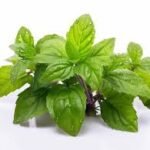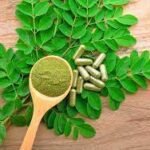Ayurveda is considered to be an ancient traditional medical system (TSMs) widely accepted. The ancient wisdom that is a part of this system of conventional medicine isn’t fully understood. It is based on ancient texts that emphasize the notion of a “natural” and holistic approach to both mental and physical health. Ayurvedic treatment blends ingredients (mainly made from plants, however, it could also contain metal, animal, or mineral), exercise, diet, and the way of life.
Ayurveda is among the most well-known and renowned traditional medical systems that have survived and prospered throughout the ages. With the vast knowledge of natural-based medical practices, the connection of the human body’s constitution and function to the natural world and nature’s elements which work in harmony and influence living things This system is expected to continue to thrive in the years in the future. It is a vast field that needs to be investigated by scientists, doctors, and experts in the field, who must keep traditional medical systems (TSMs) active and assist in their growth in the coming years. But, due to numerous obstacles, such as the absence of literature sources in various languages, and a lack of knowledge of the fundamental concepts and the history of systems that come from diverse ethnic origins There is a lack in the exchange of knowledge from different systems across the world. The knowledge of systems with diverse ethnicities could result in the exchange of knowledge and enhance understanding of various systems which could ultimately lead to the advancement and integration of research in herbal medicine when the collaborative efforts of researchers from diverse nations accompany it. These future-oriented goals are achievable when one learns more about the various systems, their concepts, and historical contexts, and concentrates on the strengthening aspects shared by the different TSMs. In this article, we’ve tried to set forth the core concepts of doctrine and the background of Ayurveda to help with these perspectives.
Branches of Ayurveda:
Ayurveda holds that the whole universe is made up of five components: Vayu (Air), Jala (Water), Aakash (Space or ether), Prithvi (Earth), and Teja (Fire). The five elements (referred to by the name of Pancha Mahabhoota in Ayurveda) are thought to constitute the three principal humors of the human body in various combinations. The three humors: Vata Dosha, Pitta dosha, and Kapha dosha are collectively known as “Tridoshas” and control the essential bodily functions and five sub-doshas to each of the major doshas. Ayurveda considers that the body of a person is comprised of Saptadhatus (seven tissues) Rasa (tissue fluids), Meda (fat and connective tissue), Rakta (blood), Asthi (bones), Majja (marrow), Mamsa (muscle) as well as Shukra (semen) along with the three Malas (waste substances) in the body. namely. Purisha (feces), Mutra (urine), and Sweda (sweat). Vata dosha helps maintain the cellular transport electrolyte balance and removal of waste products and its effectiveness is enhanced due to dryness. Pitta Dosha regulates the body’s temperature, optic nerve coordination, and control of thirst and hunger. The body’s heat conditions can trigger the Pitta. Kapha dosha has been elevated due to the consumption of fatty and sweet foods and provides lubrication to joints to enable proper functioning. The body’s catabolism can be believed to be controlled by Vata metabolism controlled through Pitta and anabolism controlled by Kapha.15 To maintain a state of well-being, a balance of the three doshas as well as other elements must be maintained. An imbalance in the three doshas can result in a state of sickness and disease.16 According to Ayurveda the belief is that a harmonious balance between the natural elements and Tridoshas that make up the human body needs to be maintained to ensure the healthiest state of life under the rules of the divine wisdom. The human body is believed to be made up of seven kinds of tissues, referred to as “Sapta Dhatus”. The seven tissues work together to ensure optimal functioning in the body of a human. In the Rakta Dhatu is similar to blood vessels and regulates the flow of blood vessels, as well as the supply of blood-related elements to our body. In addition, the Mamsa Dhatu (Muscle tissue) is a support system by way of skeletal muscles to support and the Meda Dhatu (adipose fat). Asthi Dhatu Asthi Dhatu is made up of the bone tissue of our body. The Majja Dhatu comprises comprised of bone marrow as well as the fluids that are required for the operation process of the bones as well as their proper functioning. It is also known as the Shukra Dhatu. Shukra Dhatu is accountable for the roles of the reproductive organs in the body.
Alongside the Doshas as well as the Dhatus Other important aspects that are considered in the doctrine of Ayurveda are the Tri Malas and Trayo Dosa Agni. Tri Malas represent the 3 kinds of waste products that are produced by the body as a result of digestion and metabolic function of the human body. They are comprised of Mutra (urine), Purisa (feces) as well as Sveda (sweat). Ayurveda says that when the balance between Tridosha and Sveda isn’t maintained, the organ wastes are not properly eliminated, and cause problems like constipation, diarrhea as well Rheumatoid Arthritis, asthma, and other issues. When there is a problem with the Mutra Mala (urine) remaining eliminated out of the body it may cause cystitis, urinary tract infections, and gastric discomfort. When there is a problem with the Sveda Mala isn’t eliminated within the body it may cause skin irritation and a lack of fluid balance. According to the rules of Ayurveda, the fire that is a part of the body that is responsible for every metabolic function is known as “Agni“. There are 13 categories of Agni within the human body, and the most significant is the one that is responsible for digestion fire, known in the form of Jatharagni. Jatharagni is in a close relationship with Pitta and, ultimately, the Vatta in the human body. If the digestive fire in your body increases the body due to acidity, then the increased levels of Pitta levels as well as its associated symptoms are noticed. Digestive fire plays a crucial role in regulating the normal microflora that is essential for proper digestion and the provision of energy for the whole body. Any disruption in its equilibrium causes discomfort in the stomach and intestines and can lead to pathological issues such as ulcers, diarrhea as well as constipation.
Implementation of Ayurveda:
Ayurveda uses an approach known as the ” Pancha karma” method for its treatments. Pancha karma therapy employs a variety of processes for rejuvenation of our body as well as for cleansing, and enhancing longevity. It is a form of rejuvenation that promotes longevity. Pancha Karma comprises five Karmas (actions) which are employed to remove toxic substances from tissues of the body. These are Virechan (purgation however using powders, pastes, or decoctions), Vaman (forced therapeutic emesis through the use of certain drugs), Basti (use of enemas that are made of oil that is medicated), Rakta moksha (detoxification of blood) and Nasya (administration of medications such as fumes, oils, and decoctions via the nasal routes).

The first step is that Pancha is a form of karma that is comprised of three steps, namely. Poorva Karma (preparatory procedure of the body to prepare for treatment), Pradhan karma (the principal method in therapy), and Paschat karma (consisting of regimens that must be followed to bring digestive and other absorptive functions of the body, returning to their normal state). The clarified butter as well as the medicated oil are utilized for oleation. Swedan (sweating) can result from exposure to steam in specific areas of the body. Emesis that is forced or Vamana is caused through the administration of decoctions of honey, licorice, and some hours of preceding treatment with curd, and rice. The substances are believed to increase the emesis effects. The Virechana or laxative treatment is performed through the administration of liquids and herbs like senna, cow’s milk, psyllium seed, and castor oil. The enemas utilized in Pancha Karma are made with medicated oils, or decoctions of various herbs, such as anise or sesame.
Ayurvedic Home Remedies
Ayurvedic remedies for home use are considered safe since they are both natural and organic, and therefore without any adverse negative effects. They offer a distinct advantage over other treatment options since Ayurvedic remedies are proven to treat the illness from the root and effectively. The treatment of an illness or disease with Ayurvedic treatments will not just aid in getting rid of it forever but also assist you in living an active and healthy life for the rest of your life.
A few of the main advantages of making your Ayurvedic treatments include:
-
Ayurvedic remedies are both curative and protective.
-
The emphasis is placed on the use of herbal and natural ingredients, or items readily available within the home kitchen, this should not present any risk of being harmful.
-
These treatments are completely free of any adverse side effects and offer an effective and long-term cure for the disease.
-
The treatments also focus on the necessity of a lifestyle change that requires adjustments in the Ayurvedic diet as well as sleep patterns and other activities that are essential to daily life. Thus, the holistic approach to the general well-being of a person is far more effective compared to traditional methods of modern science.
A fusion of the understanding of the latest analytical methods with an expanded perspective on the application of Ayurveda’s principles could aid in gaining acceptance worldwide. There is a growing necessity to establish and promote the scientific basis for the fundamentals of Ayurveda to ensure that this ancient and valuable medical system as a live tradition for the future.
Summary
Ayurveda has a long and rich history but there were some disadvantages to the methods used which impeded its expansion as did the western system of medicine. The active ingredients of the herbs used to treat ailments were not fully understood in the past, and today, many drugs require investigation to find out their active constituents and clarification of their mechanism of action. Despite decades of using sophisticated analytical techniques to analyze drugs herbal remedies still have some limitations. The use of mixtures of several drugs increases the complexity of understanding the effects of these drugs. One of the advantages of traditional medical methods as mentioned earlier is that they view everyone as the main patient rather than the condition. However, this can be a limitation to the use of drugs on a basis. Many issues are involved, such as the variance in strength due to differences in species, lack of integrated code for each species commonly used in TSMs, different geographical areas of growth, inaccurate identification and adulteration of drugs, the non-uniform quality control procedures, variations in processing techniques, create an urgent need for research on the comparative effectiveness of drugs in both of these systems of medicine.
Image Source: Flickr, Healthandfitnesstravel



